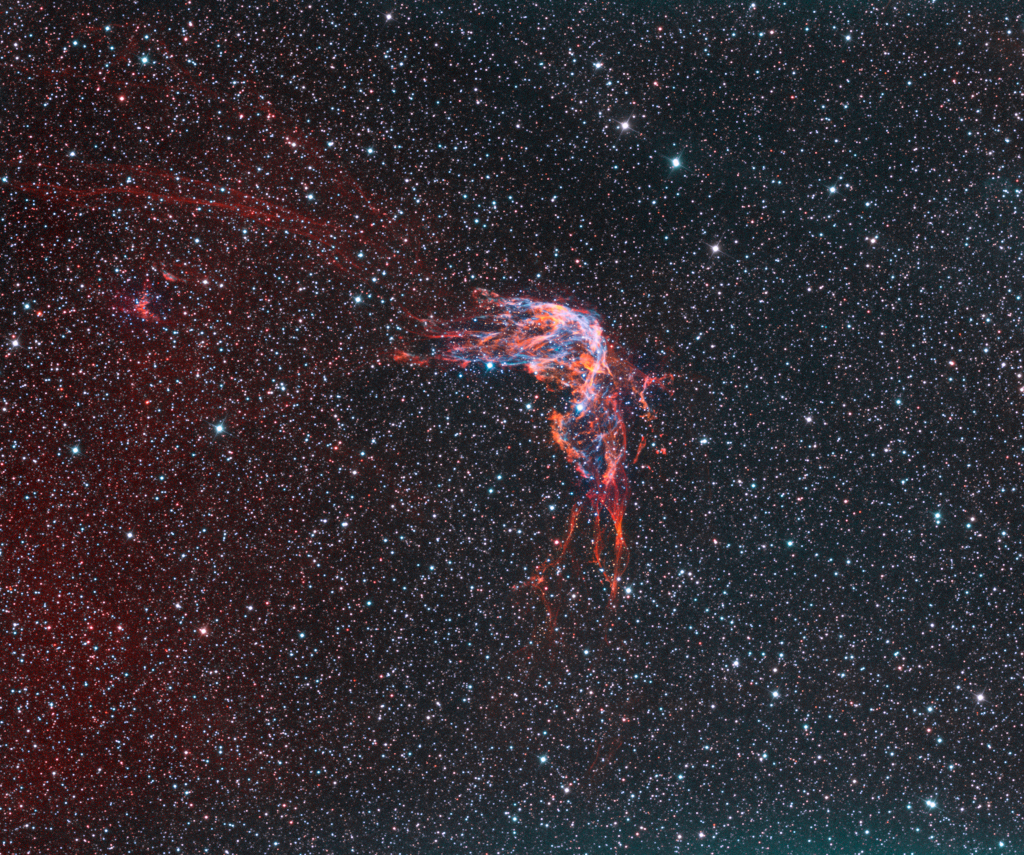2022年5月28日
RCW 86: Historical Supernova Remnant
Image Credit & Copyright: Martin Pugh
Explanation: In 185 AD, Chinese astronomers recorded the appearance of a new star in the Nanmen asterism. That part of the sky is identified with Alpha and Beta Centauri on modern star charts. The new star was visible for months and is thought to be the earliest recorded supernova. This deep image shows emission nebula RCW 86, understood to be the remnant of that stellar explosion. The narrowband data trace gas ionized by the still expanding shock wave. Space-based images indicate an abundance of the element iron and lack of a neutron star or pulsar in the remnant, suggesting that the original supernova was Type Ia. Unlike the core collapse supernova explosion of a massive star, a Type Ia supernova is a thermonuclear detonation on a a white dwarf star that accretes material from a companion in a binary star system. Near the plane of our Milky Way galaxy and larger than a full moon on the sky this supernova remnant is too faint to be seen by eye though. RCW 86 is some 8,000 light-years distant and around 100 light-years across.
Tomorrow’s picture: a galaxy cluster forms
RCW 86:古超新星遗迹
影像提供与版权: Martin Pugh
说明: 公元185年,古中国天文学家记录了一颗出现在南门星官的新星,而在现代的星图里,该天区大约是半人马座的南门二和马腹一附近。这颗数月可见的新星,可能是人类最早的超新星观测记录。上面这幅透过窄波段滤镜拍摄的深空影像,即示踪这例恒星爆炸遗留的发射星云RCW 86之内,仍不断扩张的激震波所电离的气体。在太空拍摄的影像显示,此遗迹内有大量的铁元素,不过却没有中子星(或波霎),因此这例超新星之分类可能是Ia。与大质量恒星的核坍缩超新星爆炸不同,Ia型超新星是双星系统里的白矮星在吸积来自伴星的物质后所发生之热核爆炸。这个张角比满月大的超新星遗迹,位在银河的盘面附近,其亮度过于昏暗,因此肉眼不得见。跨幅约100光年的RCW 86,距离我们约8,000光年远。
明日的图片: a galaxy cluster forms







